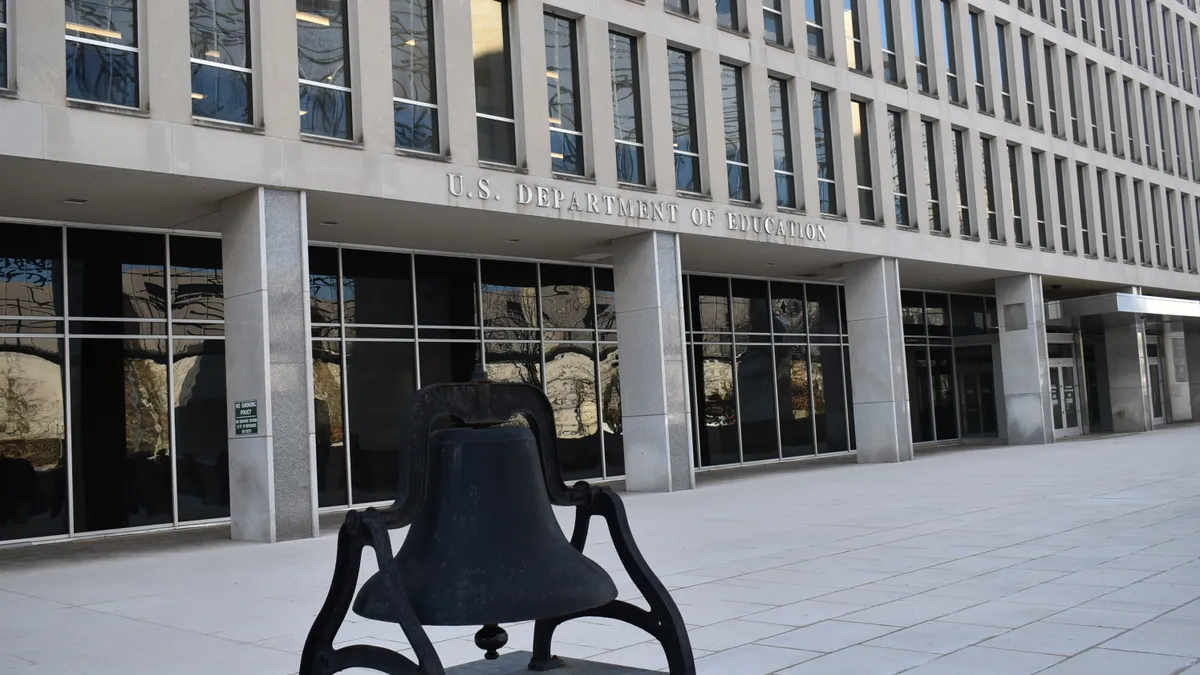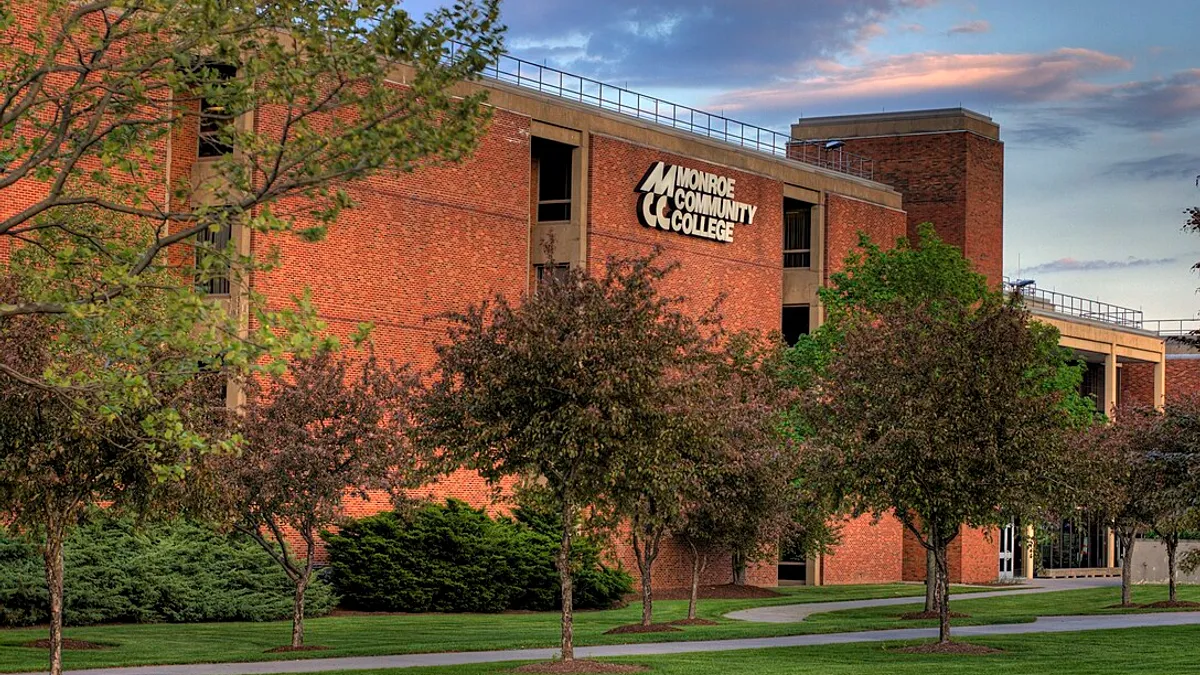The past few months have been trying for Saint Louis University’s student financial aid office, which worked overtime trying to process and distribute financial aid packages to prospective students.
Like financial aid administrators across the country, employees at the Jesuit research university in Missouri have been navigating the myriad delays and technical glitches that accompanied the rollout of the new, streamlined Free Application for Federal Student Aid.
“We were really doing five months worth of work in a span of a few weeks,” said Alex DeLonis, assistant vice president of student financial services at Saint Louis.
“It put a lot of pressure on the team,” he added. “And a lot of pressure on management and leadership to try to make sure that everyone felt supported and not burned out.”
Financial aid professionals say their work is rewarding, as they provide pathways for students to attend college. But the botched FAFSA rollout is just the latest challenge employees have faced in a field already beset by staffing shortages and turnover.
The first major redesign of FAFSA in 40 years promised to provide college hopefuls a simpler process for applying for federal financial aid, such as student loans and Pell Grants.
But things went awry from the get-go, when the U.S. Department of Education rolled out the new form at the end of December, nearly three months later than the usual Oct. 1 release. Colleges also didn’t start receiving FAFSA applicant data until March — delaying information that is critical to putting together financial aid packages. That was followed by various technical glitches that required many applications to be reprocessed.
“What we’re hearing is just frustration and exhaustion,” said Jill Desjean, senior policy analyst at the National Association of Student Financial Aid Administrators. “It’s just been a really tiring process and a tiring cycle.”
The Education Department has worked to resolve issues as they come up and to provide assistance to financial aid offices. Still, the issues have taken a toll.
“The hits keep coming,” said Desjean. “It was just one more of those, ‘Ugh, not again.’ It feels like financial aid administrators just can’t catch a break this year.”
“I call it post-traumatic FAFSA disorder.”
During an April 10 congressional hearing on the Education Department’s budget in fiscal 2025, U.S. Education Secretary Miguel Cardona said he understood the situation that financial aid administrators were in. The department, Cardona said, was working “around the clock” to ensure students have the information they need to make informed college decisions.
“I understand the challenges that our students, our families, our universities, financial aid administrators are facing. There’s nothing more important right now at the Department of Education,” Cardona said.
The Education Department allocated $50 million in February to nonprofit groups to help underresourced colleges process financial aid forms.
The department also provided some regulatory flexibilities to colleges, such as reducing FAFSA applicant verification requirements and suspending new reviews through June that check whether institutions are meeting various federal standards.
Despite those efforts, the last few months have been “pretty stressful” for the University of Maryland Global Campus’ financial aid systems team, said Heather Hensgen, a business analyst within UMGC’s financial aid systems division.
Things have finally started to calm down. But at one point over the course of two or three months, the team was getting daily updates about errors and issues with the FAFSA from the Education Department and Oracle, which provides the campus with software to process FAFSA applications and create financial aid packages.
Hensgen said she couldn’t trust that the FAFSA information the Education Department was sending over was correct. Oracle’s software hit snags because the company was navigating the various department delays, she added.
UMGC's financial aid team needed to figure out what was happening, try to explain developments to students and then make adjustments to the university's system for processing financial aid applications, according to Hensgen.
The biggest challenge was tracking whether bugs they experienced when processing FAFSA applications were occurring because of the Education Department or the Oracle software not working properly due to the agency’s delays and glitches. They had to keep tabs on which update fixed each issue, she said.
“I call it post-traumatic FAFSA disorder because now that we’re on what I feel like is the other side of it, it feels like you went through a tornado,” said Hensgen.
The uncertainty mixed with the pressure felt over the last few months to get families the information they need to make college decisions “has been like nothing I’ve experienced in my career,” said DeLonis, of Saint Louis.
“Working with my team and financial aid colleagues across the country, they’re all kind of feeling the same thing,” he said.
As of late May, the university had gotten aid offers out to most of the families that had submitted FAFSAs to the college, said DeLonis.
More turnover ahead?
According to a joint NASFAA and CUPA-HR report released last month, nearly 56% of 298 financial aid professionals surveyed in 2023 — before the FAFSA debacle — reported being somewhat to very likely to leave their job within the next 12 months. More than half said they were interested in exploring opportunities outside of higher education.
As to why, financial aid employees largely named wanting higher pay, the ability to work remotely and flexible work schedules.
“We’ve been struggling since the pandemic with people leaving, high turnover,” said Desjean. After this year, “we’re going to see a lot more people reporting burnout, reporting turnover, reporting having difficulties filling positions.”
At Saint Louis, the 30-member financial aid team experienced some turnover during the current cycle, but the number of people who left did not seem “too out of the ordinary,” said DeLonis. It’s unclear whether anyone left because of the increased workload, he said.
All employees in Saint Louis’ financial aid office faced peaks and valleys in the hours they needed to work over the past few months, said DeLonis.
Its systems team “was working around the clock to get things up and running with our aid offers,” he said. “All of that is automated, electronic, it takes a huge amount of tech support to do that.”
To help with the workload, the financial aid office recently hired a new systems analyst, he said.
"It feels like financial aid administrators just can’t catch a break this year.”

Jill Desjean
Senior policy analyst, National Association of Student Financial Aid Administrators
UMGC’s financial aid systems team of 12 didn’t need to work extra hours, however, and managed to continue its healthy work-life balance, said Hensgen. The team was “resilient,” she explained, with everyone coming together to do their part and get the work done, she said. They experienced zero turnover during the cycle, she said.
The financial aid community is changing “millions of lives every year,” said Frank Ballmann, director of federal relations at the National Association of State Student Grant and Aid Programs.
As difficult as the job is, it is hard to walk away from it because people in the profession know it is crucial that they continue that work, said Ballmann. Still, if the situation is not fixed by next year, the desire among many employees to continue under that stress could change.
“If this is just a one-time glitch and next year’s FAFSA cycle goes fine, people will get over it,” Ballmann said. “But if next year is like this year, you know, you definitely hear a lot of people talking about burnout and time to change fields.”
‘Like climbing up Mount Everest’
On May 30, Cardona announced steps the Education Department would take to modernize and improve the Federal Student Aid office. Those steps included conducting a “full-scale review” of FSA’s organization, management, workflows, business processes and operations. The department is also bringing in an independent consulting firm to recommend ways to improve the office.
Meanwhile, FSA recently announced that the office’s chief operating officer, Rich Cordray would step down from the position at the end of June. It will bring on College Board President Jeremy Singer to serve as an executive advisor to oversee the FAFSA in the 2025-26 aid cycle.
Such improvements to the office’s operations could be critical to helping the financial aid profession.
Looking ahead, Desjean said she doesn’t expect “we’ll see the disaster of this year,” repeated next year as the Education Department will not be building an entirely new system again.
This month, the Education Department announced it was still aiming to meet the Oct. 1 rollout for the 2025-26 FAFSA cycle. The agency said it will not make any additional major changes to the form and will bypass public comment on it this year.
Desjean has some confidence that the Education Department will meet that rollout date, but is not convinced the department will have the entire process ready by then — such as allowing students and schools to make corrections.
However, she also hopes the department doesn’t rush to “put something out by Oct. 1 because they feel like they have to save face, and then find out things don’t work,” she said.
"Now that we’re on what I feel like is the other side of it, it feels like you went through a tornado."

Heather Hensgen
Business analyst, University of Maryland Global Campus’ financial aid systems division
For the financial aid administrator profession, it’s important for the Education Department to run a smooth FAFSA process next year, said Desjean.
If next year isn’t smooth, “the issues from this year would be compounded,” she said.
While Hensgen said she expects some issues again next year, she nonetheless predicts a much smoother cycle.
“I’m sure we’ll experience some issues, but that’s just financial aid,” said Hensgen. “I’m hoping that lessons have been learned and going forward, it will not be as rocky of a rollout as this year was — because this was literally like climbing up Mount Everest.”





















